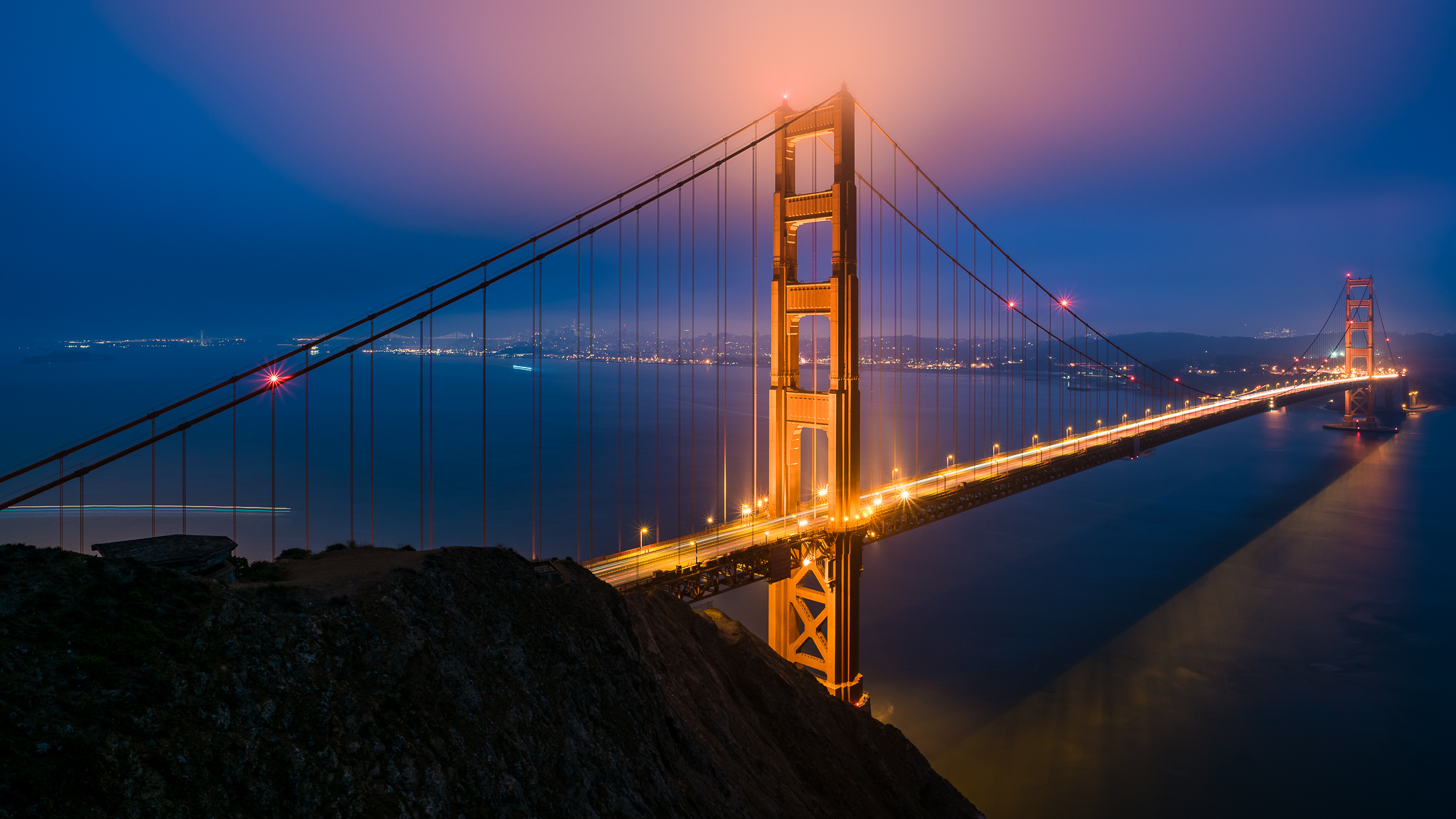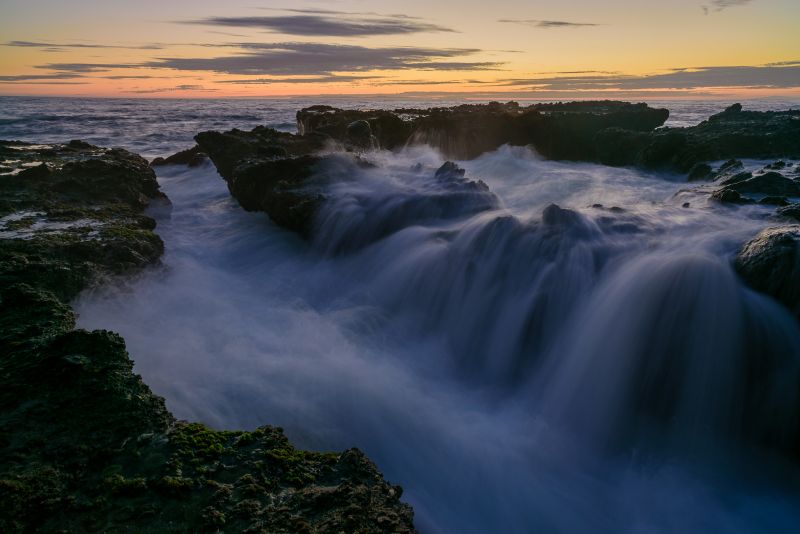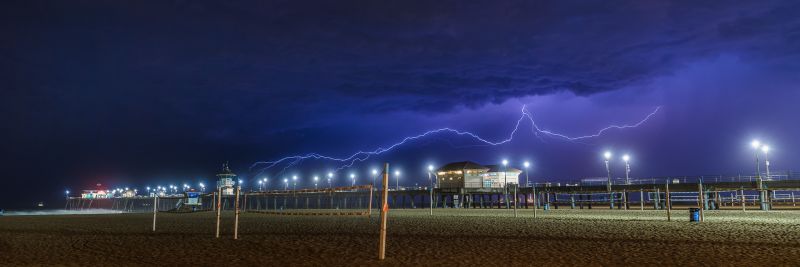
The Rokinon 20mm f/1.8 has been on the market for a while, however, it has mostly lurked in the shadows of all the exotic 24mm primes, and of course the glut of impressively big and heavy ultra-wide zooms.
But, what if you don’t really need a zoom, and all you want is a portable, affordable lens that is just a little bit wider than 24mm?
This is where the 20mm focal length comes in, and might be a tempting option for some photographers. What types of photographers should consider this Rokinon 20mm? We’ll answer this question in our full review, so keep on reading!
 Packaging is very minimal; included are caps, a basic plastic hood, and a pouch
Packaging is very minimal; included are caps, a basic plastic hood, and a pouch
The Rokinon (Samyang) 20mm f/1.8 ED AS UMC Wide Angle Lens
The Rokinon 20mm f/1.8 is usually priced at about $550-600, but every now and then it does go on sale for up to $200 off, depending on which mount you’re purchasing. For example, right now (November 2018) you can get this lens for between $400 and $499, depending on the mount. (It’s available for Canon ($449), Nikon ($499), Sony E/FE ($499), Fuji X ($400) Pentax K ($479), and last but not least, Micro Four Thirds ($399).
Considering such a great price, it might be a tough choice to decide between this, and either a 24mm prime, or an ultra-wide zoom. So, in this review we will break it down for you. We’ll start by talking about the exciting stuff- is it sharp, etc. Then, we’ll actually discuss which types of photographers might want to consider this lens instead of its alternatives/competition.
 Rokinon 20mm f/1.8, Nikon D750
Rokinon 20mm f/1.8, Nikon D750
2/3 sec @ f/11 & ISO 100
[Check out Fstoppers newest “Photographing The World” Landscape Workshop!]
Rokinon 20mm f/1.8 – Pros
Before you even consider buying a lens, there are a few questions you always ask. Of course, “is it sharp?” is the first one, but image quality is always more than just sharpness. So, whenever weighing the pros and cons of a lens, don’t forget to consider things like color reproduction, vignetting, fringing & aberration, distortion, etc. Also, of course, you’ll want to look for people’s long-term ownership reports, to determine if a lens has a history of issues, or if it stays reliable for many years.
Now that you know what to look for in a lens review, let’s give you the verdict on this Rokinon 20mm f/1.8!
 Rokinon 20mm f/1.8, Nikon D850
Rokinon 20mm f/1.8, Nikon D850
(Read our full D850 review HERE!)
Very Sharp at f/2.8, Great Overall Image Quality
While I can’t say it’s flawless at f/1.8, I can say that when you set it to f/2.8, you’re going to be very impressed. Sharpness is great from corner to corner, and only slightly “fuzzy” in the extreme corners of un-cropped full-frame sensors. In other words, if you’re shooting 16:9 video, or cropping to a 1080p or 4K timelapse, you’ll find this lens to be almost flawless by f/2.8
Of course if you’re shooting stills for print on a 40-50 megapixel camera, you might be a little more discerning, however, most of the time you’re doing that type of work you should be able to hit f/4 or f/5.6 anyways.
We’ll talk about the more demanding field of astro-landscape photography later, but for now, suffice it to say that all types of photographers should find this lens to be sharp.
Rokinon 20mm f/1.8, Nikon D850
1/13 sec @ f/13 & ISO 64
(Read our full Nikon D850 review HERE!)
The rest of the aspects of the lens’ image quality are also rather impressive. It boasts no more color fringing than Adobe etc. can’t automatically remove, and although it doesn’t come with an Adobe distortion profile, it is relatively simple distortion that I find a +14 setting takes care of. Oh, and don’t forget those beautiful sunstars, and minimal-yet-pleasing flare!
 Rokinon 20mm f/1.8, Nikon D750
Rokinon 20mm f/1.8, Nikon D750
30 sec @ f/10 & ISO 100
Delightfully Compact And Portable For a 20mm Lens
For a lens this sharp, you would expect its optics and overall build to be relatively big and heavy for a full-frame lens. So the fact that it is decently portable and still accepts traditional 77mm front filters is a delight, and one of the main selling points of the lens.
Body communication (on Nikon & Pentax)
Unfortunately this can’t be a perk for all of the lens mounts available, but any Nikon or Pentax-shooting landscape photographers out there will be able to enjoy electronic contacts which not only allow you to adjust the aperture from your camera instead of the lens, but will also transmit EXIF data to the camera for the lens’ focal length and aperture setting. This is a really convenient feature that I wish were available on Canon, Sony, and all other mounts. (I guess I’ll have to list this in the cons section too, unfortunately?)
Smooth Focus Ring, Great Focus Throw
One of the main benefits of manual focus lenses is that they’re usually much easier to focus than an autofocus lens. The focus ring on the Rokinon 20mm f/1.8 is really smooth to operate, and the focus throw itself is fantastic as well. This is a benefit for various different types of photographers from cinematographers who have to pull or follow focus, and nightscape photographers who need to focus extremely precisely at infinity for sharp stars.
Rokinon 20mm f/1.8 – Cons
As with any lens that promises a lot, yet is also affordable, there are a couple compromises that must be made in order to offer what most photographers prioritize in shopping for a lens. So, let’s talk about the drawbacks of the Rokinon 20mm f/1.8.
Milky Way Over Seascape Waterfalls
(Master Milky Way photography with our complete workshop here!)
Rokinon 20mm f/1.8, Nikon D750
10 images captured @ 15 sec, f/4, ISO 6400
Stacked using Starry Landscape Stacker software
Image Quality in Extreme Corners
While the Rokinon 20mm has good sharpness at all apertures towards the center of the image, it is definitely not perfect at its edges and corners when shooting at f/1.8 thru f/2.5
This slight penalty in image sharpness is understandable, though, considering the price and compactness of the lens. To be honest, it’s really quite decent at the edges once you get to f/2.8, let alone f/4. So, that is why I’m mentioning various aspects of sharpness and image quality as both pros and cons.
 Rokinon 20mm f/1.8, 100% sharpness, center @ f/2
Rokinon 20mm f/1.8, 100% sharpness, center @ f/2
 Rokinon 20mm f/1.8, 100% sharpness, corner @ f/2
Rokinon 20mm f/1.8, 100% sharpness, corner @ f/2
Look at this another way: are there any alternatives that can reach ~f/2 at 20mm, and are better than this? The answer is, NO. Nikon’s 20mm f/1.8 G is only a little better in the corners, and Sigma’s massive 20mm f/1.4 Art is actually equal or worse in the extreme corners, due to severe coma that does not change much even when stopping down from f/1.4 to f/2, or even from f/2 to f/2.8.
In short, yes, I am obligated to mention that this lens could be sharper at its faster apertures when tested on a high-megapixel camera. However, its competition isn’t exactly flawless or universally compelling, either. You would only want to buy the Sigma 20mm f/1.4 Art if you cared much more about central sharpness, (admittedly, the Sigma is an ultra-sharp beast from the center to roughly the rule-of-thirds area; see our full review here) and less about the corners.
Alternately, if you’ve got the money to spend and would rather have autofocus than super-smooth manual focus, the Nikon 20mm f/1.8 G may be your only choice. Or, lastly, if you’re on Sony FE and just want a slightly sharper, more well-built lens overall, the Tokina 20mm f/2 Firin comes in both autofocus and manual focus versions, and is indeed a better option if you have $800-950.
 Rokinon 20mm f/1.8, Nikon D750
Rokinon 20mm f/1.8, Nikon D750
13 sec @ f/2.8 & ISO 3200
General Build Quality Still feels Cheap
To get right to the point: Rokinon and Samyang (and Bower) have gotten a reputation as a very sharp, but relatively low-cost, almost “disposable” alternative brand. These days, even hard-hitting brands like Tokina, Tamron, Sigma, and others have begun producing well-built, durable lenses that can take a lot of abuse yet hopefully still be “perfect”, optically.
So while the Rokinon 20mm f/1.8 does feel decently well built, the materials do still feel like a weaker grade of plastic compared to both name-brand and third-party competition. In short, if you get one of these, do remember to be slightly more gentle with it when you’re off on a rugged adventure in the wilderness!
 Rokinon 20mm f/1.8, Nikon D750
Rokinon 20mm f/1.8, Nikon D750
1/100 sec @ f/16 & ISO 125 (oops)
So, what I’m saying is, I wish Rokinon would get around to making more SP (Samyang XP) lenses, with more solid durability, as well as more impressive wide-open sharpness! …Then again, such a lens would undoubtedly be bigger, heavier, and more expensive.
Or, maybe we could expect a sharp, decently built Rokinon 20mm f/2.8 AF, now that we have more full-frame mirrorless systems available? I hope so!
In conclusion, the drawbacks of this lens mean that you really have to want a portable and affordable option in the ~20mm range, otherwise there are more durable, versatile options available, even if they do cost and/or weigh 2-3 times more.
 Rokinon 20mm f/1.8, Nikon D850
Rokinon 20mm f/1.8, Nikon D850
1/500 sec @ f/8 & ISO 64
Sample Variation
This has been a problem with many fast-aperture lenses in recent years, especially wide-angle lenses that might be used for wide-field astrophotography, where having a perfectly flat plane of focus is extremely critical. However, it has definitely been a slightly more daunting challenge to deal with on Rokinon or Samyang lenses, because the overall quality control from lens to lens just isn’t as high as the name brands.
In other words, you’re more likely to get a Rokinon 20mm f/1.8 that is slightly soft on the left or right edge, than you are from the Nikon, Sigma, Tokina, or other 20mm alternatives.
So, I want to strongly encourage “Roki-Yang” as a company to continue improving their overall quality control, and reducing sample variation. When a serious astro-landscape photographer has to buy 2-3 lenses just to find a sharp one, and then go through the hassle of returning the other 1-2. (And, let’s be honest, the abuse of the store’s return policy and the increased frustration of other customers who might get stuck with these “lemon” lenses.)
If this sounds like a risk you’d rather not take, then I must still advise a word of caution when buying this lens- check it for plane-of-focus sharpness on a distant subject as soon as you accept delivery of the lens, because there’s a chance you’ll need to send it back.
Personally, this wouldn’t stop me from buying any Rokinon, because as a veteran lens reviewer and general gear abuser, I know that de-centered lenses (sharp in the center, but literally out of focus at the edges) are common enough on ALL makes and models that I’ve just resigned myself to buying whichever lens’ specs I need, whatever the risk. You may not want to take the same risk, though, whether you shoot professionally, or just as a fun hobby…
 Obligatory cute pet photo! (The Rokinon 20mm makes a great “in your face” lens)
Obligatory cute pet photo! (The Rokinon 20mm makes a great “in your face” lens)
Who Should Buy The Rokinon 20mm f/1.8 ED AS UMC
Here’s the primary market for this lens: landscape and nightscape photographers who are looking to go a little wider than 24mm, but who aren’t interested in an f/2.8 zoom whether due to size, weight, price, or the fact that most of them don’t accept front filters.
The Rokinon 20mm f/1.8 is, in fact, one of the very few lenses that go wider than 24mm, is faster than f/2.8, and yet still accepts standard 77mm front filters. The only other “common” lenses are the Nikon 20mm f/1.8 and the Tokina 20mm f/2 Firin, the latter being only available on Sony E mount.
 An impressive Close-Focusing Distance of just a few inches
An impressive Close-Focusing Distance of just a few inches
makes the Rokinon 20mm almost a macro lens!
Of course, if you’re looking for a compact lens but are willing to have f/2.8 as your fastest aperture, (Since the Rokinon isn’t truly good until f/2.8 anyways) …then at least two more great options come into play- the Zeiss Loxia 21mm f/2.8 for Sony FE, and the Canon 16-35mm f/2.8 L mk3. Yes, there are others, but most of them just aren’t as sharp as these lenses which I have mentioned here.
Last but not least, in my opinion, 20mm is a perfect focal length for vlogging, and general BTS filming! If you use manual focus for your vlog “walk-and-talk” footage and are looking for as lightweight of a lens as possible that accepts 77mm filters so you can easily slap on a variable ND filter, then the Rokinon 20mm is one of the lighter weight options in this range that can hit ~f/2. Personally, I’ve never used face detection autofocus for my own vlogs, but I know that some others do.
 The Rokinon 20mm f/1.8 Is A Great Budget Option For Vloggers
The Rokinon 20mm f/1.8 Is A Great Budget Option For Vloggers
Anyways, that’s about it for who should buy this lens. Other than that, most other photographers will likely have different priorities. Portrait photographers and journalists may need autofocus, and probably care more about central sharpness than extreme corners, thus making something like the Sigma 24mm f/1.4 Art, or the Nikon 24mm f/1.8, or the new Sony 24mm f/1.4 FE, much better options. (Or at 20mm, the Nikon 20mm f/1.8 or the Tokina Firin 20mm f/2 AF on Sony FE) Other photographers may not care about how lightweight a lens is, or care about front filters, and would much rather have a zoom instead of a prime.
So, to bring it full circle to our introduction, you have to ask yourself this question- Do you like 24mm primes, but wish you had something a little bit wider?
 Rokinon 20mm f/1.8, Nikon D750
Rokinon 20mm f/1.8, Nikon D750
30 sec @ f/10 & ISO 400
Rokinon 20mm f/1.8 Lens Review Conclusion
The wide-angle focal length of 20mm is indeed a bit of an outlier, in a field dominated by 24mm primes and ultra-wide zooms. However, if you’re looking for a nice compromise between these two categories, in a package that doesn’t break your bank or your back, (and isn’t cumbersome to use filters with) …yet is up there with the best of them in terms of sharpness, (Especially when stopped down to f/2.8-4+) …then I would have to say that the Rokinon (Samyang) 20mm f/1.8 is indeed highly recommended. It’s certainly a niche lens that most people won’t consider, but those who do need exactly what it offers will find it to be a good value. Especially whenever it goes on sale for $100-200 off, like it is right now! (November 2018)
If you have any other questions about this lens, please feel free to leave a comment! We have many more lens and other gear reviews coming soon.
Matthew Saville
Follow his wilderness nightscape adventures on Instagram: instagram.com/astrolandscapes









Get Connected!